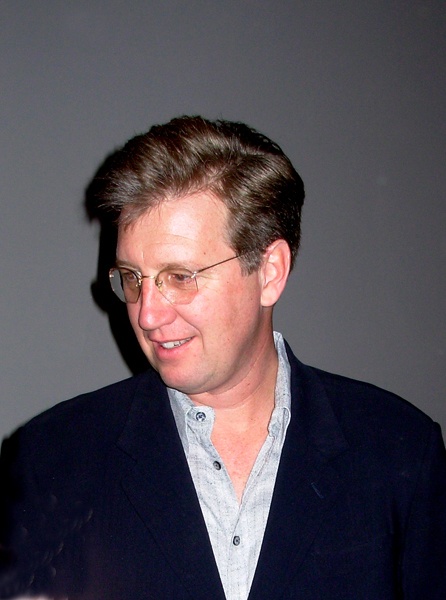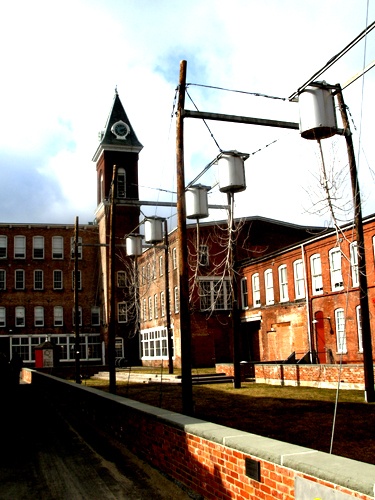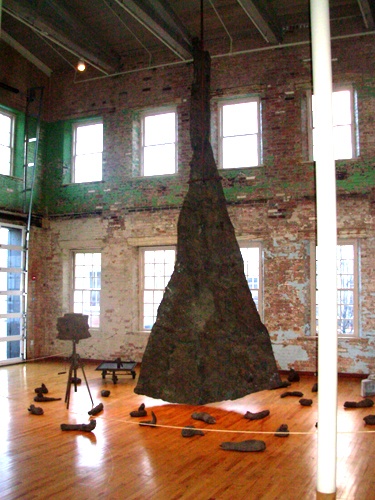Mass MoCA Announces $37 Million Fundraising Campaign
25 year long installation by Sol Lewitt in newly renovated space
By: Charles Giuliano - Apr 18, 2007
With its summer season in suspense because of deadlocked negotiations with the artist Christoph Buchel in a dispute over expenses and details for an installation in the largest space of the Massachusetts Museum of Contemporary Art, its director, Joe Thompson, recently announced considerable progress toward reaching a target of raising $37 million involving several agendas intended to provide long term stability for the sprawling, 13 acre, North Adams based, contemporary art facility.
As a young institution, it opened to the public in 1999, with great scale and ambitious, avant-garde exhibitions and programming, Mass MoCA has been largely dependent upon ticket sales, membership fees, and grants for its projects. It has also assumed debt to develop the enormous site. While it maintains an impressive space for exhibitions that rotate on an annual basis, in the past few years, it has primarily focused on developing part of its campus as rental property. This fragile scheme of revenue sources leaves the museum particularly vulnerable to problems and programming glitches, such as the current conundrum, with its potential to have a devastating impact on an audience for the crucial summer season.
To avoid the setback of issues such as those presented by the difficult and demanding installation artist, Christoph Buchel, which some have suggested the museum should have been more savvy in anticipating, it is crucial that Mass MoCA initiate a drive for an endowment to tide it over in times of crisis, such as now, as well as to move forward with cost effective expansion and development of more of its remaining, former factory, warehouse buildings.
As a part of this strategy Thompson has announced initiating the development of a new 27,000 square foot, three-story building which will house a 25-year-long installation of 50 yet to be created wall drawings, from 1968-2007, by the recently deceased minimalist artist, Sol Lewitt. The project which will cost $8.6 million represents collaboration between Mass MoCA and the Yale University Art Museum which owns the plans and concepts of the works to be installed directly to the museum walls by the deceased artist's former assistants as well as volunteers including students from Yale, MCLA, and Williams College. It is anticipated that the drawings will take several years to execute and that the first phase of this will be on view by late 2008.
Lewitt, who was born in 1928 and died on April 7, is said to have created some 1,000 "temporary" wall drawings in his career. While the works, which were executed by assistants following his plans, were intended to be painted over after their exhibition many institutions including countless museums opted to maintain them as a part of their "permanent collection." In that regard Lewitt may be the contemporary artist with the greatest number of square feet or acreage of work on view in American museums and institutions. To imply that Lewitt is the most over exposed artist of his generation risks understatement. For example, the Williams College Art Museum, within walking distance of Mass MoCA, has a wall piece surrounding its staircase. So while creating a 27,000 square foot space dedicated to the work of a single artist may be a clever and cost efficient means of developing more space, we question whether there is a great and compelling need to see yet more of the work of this artist particularly for the next generation or score plus of years. While the front money of $8.6 million may seem considerable, factored out over 25 years, that comes to just pennies per square foot annually.
Actually the plan to create the long term Lewitt installation as an ersatz museum within a museum recalls the original intentions for Mass MoCA articulated by Tom Krens when he was director of the Williams College Museum of Art. Back when the enormous Berkshire based museum was just a thought in his mind we met while Krens, with a big ring of keys, opened up a number of the shuttered buildings of the former Sprague Electric, and took me on a tour of its vast factory spaces. There were holes in the ceilings, buckled floors and rattling windows. With enormous confidence Krens articulated just how the site would be developed and his strategy for filling the spaces. This notion was pitched to then governor Michael Dukakis as a scheme for economic development and tourism for hard scrabble Northern Berkshire County the poor relative of upscale Southern Berkshire Country which is all importantly a full hour closer to commuters from New York City. Real estate, significantly, is double or triple the cost in South Country vs. North County, although Mass MoCA appears to have some impact in creating a balance in that disparity. Equity in the artist lofts in the nearby Eclipse Mill, for example, has doubled since they were developed just a couple of years ago by artist/ entrepreneur, Eric Rudd.
After Krens took me on that tour of the Sprague campus we settled in his office to discuss his vision to develop Mass MoCA. He described the availability of large scale minimalist works sitting in warehouses because museums and collectors had no space to display them. These large works, primarily sculptures fabricated from commercial construction materials such as plywood and steel, require little or no conservation and maintenance. Why not "warehouse" these works in a site such as Mass MoCA? Because of the nature of the works the spaces would not require the expensive climate controls that are the norm for museums displaying delicate and sensitive works of art. To illustrate his point for a long time, while the museum was under construction, it displayed "sample" works such as those by the Arte Povera artist Mario Merz.
Krens put me in touch by phone with Count Giuseppe Panza di Biumo contacted at his villa in Varese, Italy. At the time Krens was planning to install works from that collection, as well as others, as long term loans. Significantly, when Krens left Williams to become director of the Guggenheim Museum he later negotiated the deaccession of works from the collection to raise money to acquire a number of minimalist works from the Italian collector. Some 80 of the choicest Pop and Abstract Expressionist works from his collection had already been cherry picked by LA MoCA.
Ironically, Krens was remarkably far sighted in his notion of warehousing minimalist works. This is precisely the concept of the very successful Dia Beacon in upstate New York. It is the only American museum which rivals the space of Mass MoCA for displaying contemporary art. A major difference is that virtually all of Dia Beacon represents an ongoing installation of its permanent collection. In a different and more expensive programming strategy Mass MoCA opted for long term special exhibitions which rotate seasonally. The development of the Lewitt retrospective is a move closer to the Krens/ Dia model. There are other similar museum projects in remote locations such as the space that the late Donald Judd developed in an abandoned Air Force base in Marfa, Texas to house his own work as well as a selection of that of his peers. Mass MoCA has a long term loan of a major piece by the German artist, Joseph Beuys, which takes up half of a gallery in its temporary exhibition space.
While the long term Lewitt installation may make fiscal and curatorial sense it remains to be seen whether it becomes a must see destination for art tourists such as those who make pilgrimages to Dia Beacon and Marfa, Texas.
In announcing its $37 million capital campaign the museum reported that it has secured some $25 million of that overall goal including most if not all of the $8.6 million for the Lewitt building. As a part of its "Permanence Campaign" $16 million will be designated toward an endowment. For programming support it is earmarking $6.4 million and another $6 million toward debt reduction and a reserve fund for maintenance. Of the $12 million yet to be raised the museum plans a $4-5 million regional and $7 million national campaigns. Details have yet to be announced.






